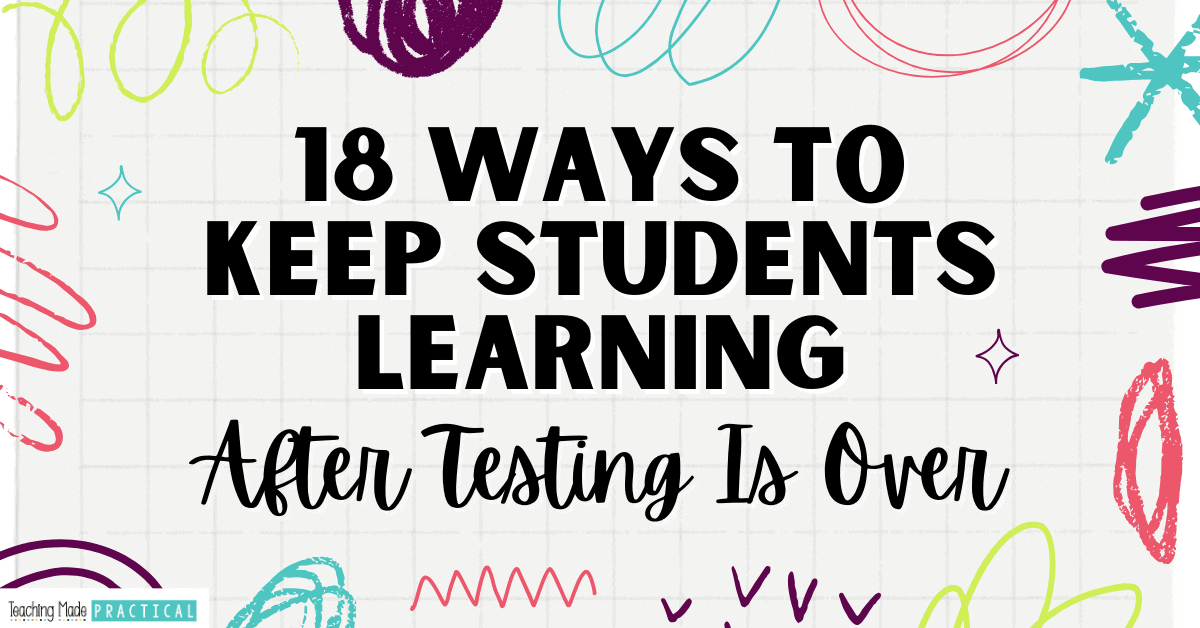
After state testing is over, it can be difficult to keep 3rd grade, 4th grade, and 5th grade students engaged. As the weather starts getting nicer, students begin to get spring fever. They know the end of the school year is fast approaching, and student motivation can dwindle.
The time after testing, however, is a great time to try some new things. Usually teachers are given a little more freedom at the end of the year. Without the pressure and time crunch that testing brings, you have more time to complete longer activities or projects.
Below are 18 different ideas to keep students engaged and learning after testing is done. Some of the links below are affiliate links for Amazon.
18 Ways to Keep Students Motivated After Testing
1. Teach a Lesson Outside
The end of testing usually corresponds with the beginning of nice weather. Take your class outside to enjoy the beautiful weather - just changing up the setting can reenergize and re-motivate students.
This works best for lessons that do not require a lot of materials or manipulatives. Have students bring a book outside to read, or have students bring a clipboard, paper, and a pencil outside and write. Or, check out these outdoor lesson activities for upper elementary!
An outdoor scavenger hunt is always fun and can be used to review a huge variety of skills! Check out these outdoor scavenger hunt ideas for inspiration.
2. Take Time to Teach Kindness
These no prep kindness worksheets are great for immediately after testing - they give students a break from academics while still having them think about something meaningful.
Then, read one of these kindness picture books. Encourage students to watch for ways others are being kind - and then celebrate the kindness in a fun way!
3. Take a Tour of Next Year's Classroom
Pair up with a teacher from the grade level above you and take your class for a visit. This gets students excited about their upcoming school year and helps them overcome any nervousness. You can take this a step farther and pair up your students with a student in the grade level above them for an interview.
This End of Year Tour Resource can help facilitate a tour and interview like this. It has interview questions, a place to record answers, pages to help facilitate a tour of the classroom, and reflection questions.
4. Write Thank You Letters
Schools are full of people who rarely get the thanks they deserve. Have your students write thank you notes to other teachers, the janitorial staff, lunch ladies, secretaries, paraprofessionals, special education teachers, parent volunteers, and anyone else that deserves thanks.
Students can make their own cards with paper and art supplies. Or you could get another writing lesson in with this No Prep Thank You Letter Activity.
5. Read Aloud a Fun Book
This isn't a book about reptiles...it's a book about thinking critically, recognizing an author's point of view and bias, and exposing students to different perspectives.
Find out more about why both teachers and students will love What Do You Think About Reptiles.
6. Experiment with Technology
All teachers want to integrate technology into their lessons in a meaningful way. The learning curve for students to learn a new piece of technology, however, often requires large chunks of time that teachers do not have. Use this time after testing to experiment and have students try new things.
Check out some of these ideas for integrating technology into your lessons:
7. Play Some Strategy Games
When I was in 5th grade, my teacher taught our classroom how to play chess. It was a lot of fun and required us to problem solve and come up and follow through with a strategy.
While games like this clearly benefit students and their brains, they are not often taught in schools anymore because they do not directly correlate to a standard.
Try to take advantage of any extra freedom you might have before the end of the year to play some of these strategy games with your students.
8. Write Letters to Next Year's Students
Have your upper elementary students write a letter giving advice to next year's class. Have students think about what they learned this year - both academically and behaviorally - and pass on their wisdom to next year's students.
Use my End of Year Letter to Next Year's Class Resource as a no prep, scaffolded option.
9. Let Students Be the Teacher
Give each of your students the opportunity to teach the rest of the class something. Have students prepare a 5 - 10 minute presentation on a topic of their choice (that is teacher approved, of course).
Give them some freedom in what visuals they should include in their presentation. This gives them a chance to be creative while practicing their speaking skills.
Alternatively, you could have students spend some time creating and presenting passion projects.
10. Clean the Classroom
This technically is not standards based learning, but it is a lesson in how to organize and take care of things that have been entrusted to you. 🙂
Let your 3rd, 4th, or 5th grade students help you out by doing some spring cleaning. There are a lot of tasks that they can help with:
- Test out all of the markers and glue sticks and discard any that don't work.
- Organize your classroom library or find the books that have broken covers.
- Organize math centers and manipulatives.
- Clean out and wipe down desks.
11. Have a Snowball Fight
Are your students needing a break from academia? They can let some steam out by having a paper snowball fight. Crumple up paper at let them throw it at each other.
If you need to keep your activities educational, snowball fights still make a great action. They are a fun way to engage students, get them moving, and practice a variety of skills. Read more about how you can use snowball fights to review all sorts of skills.
Or, download a free snowball fight activity here.
12. Complete Some Puzzles
Puzzles - whether they are the typical puzzles that you put together to make a picture, or something like riddles or logic puzzles - can be a lot of fun and help develop a growth mindset in students.
Puzzles usually take longer to complete and require students to fail before they succeed. We don't often have time for growth mindset activities during the school year, but this is essential to a student's development!
13. Reflect on the School Year
After testing is a great time to think for students (and teachers!) to reflect on the school year and think about what went well, how they grew, and what they still need to learn.
Use these End of Year Reflection Question Cards to help facilitate the discussion in your class. And best of all, they work as end of year writing prompts as well!
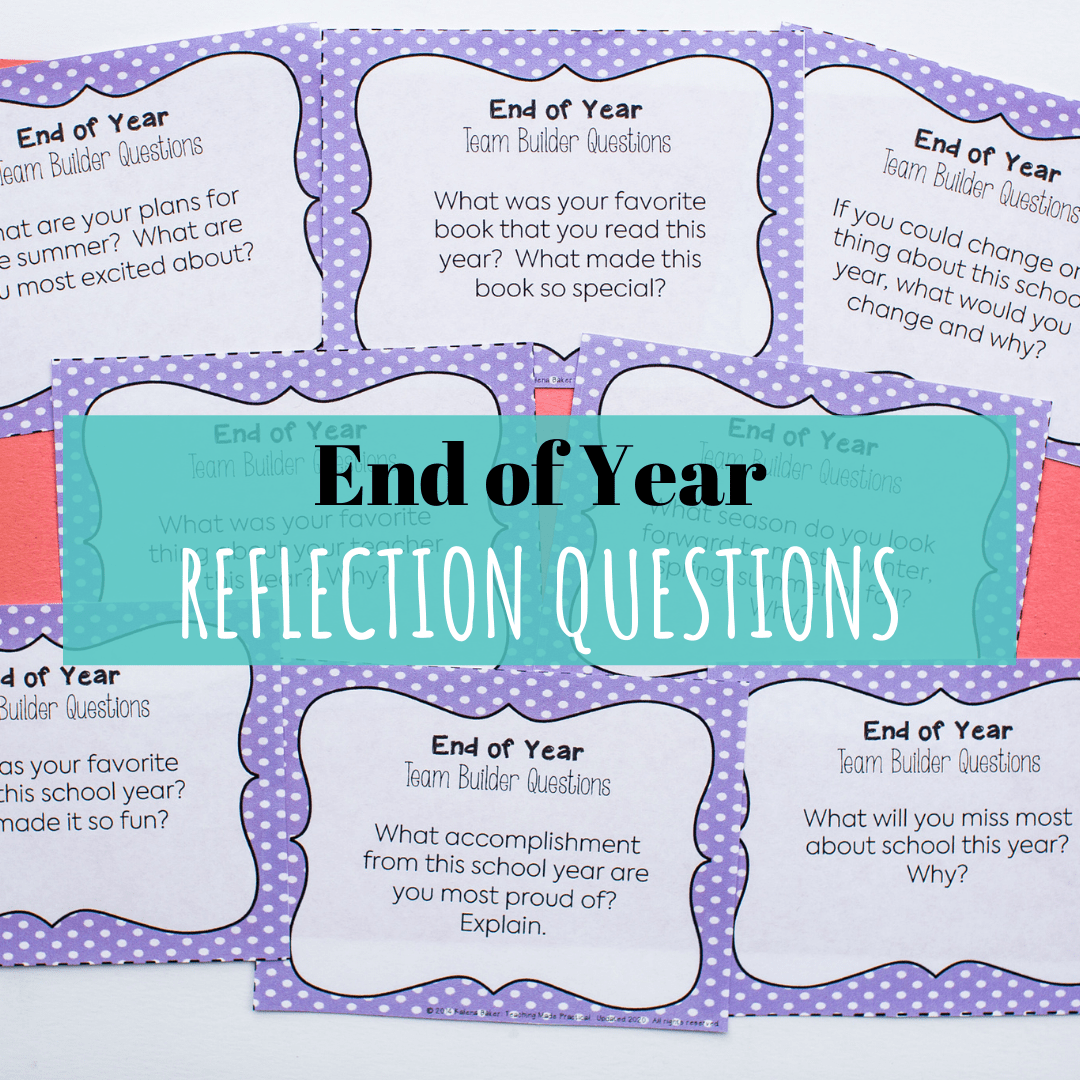
14. Do Origami Together
Origami is not only fun, but it can also benefit upper elementary students academically. It builds spatial awareness, understanding of symmetry and other geometry skills, and requires students to read and follow instructions. It also requires patience and persistence.
Libraries usually have plenty of books with step-by-step instructions for origami, or check out this origami website. And be sure to provide your students with plenty of paper options.
While your students are working, read one of these haiku books to them. One of the books has origami ideas to go along with each poem!
15. Practice Oral Storytelling
Give students a chance to practice telling stories orally and build their speaking and listening skills. We often focus on writing stories, but telling stories orally is an important skill as well.
You can use wordless picture books to help start the creativity process. Have students use the pictures from a wordless book to tell their own story. You can even record students telling a story for some technology integration! Or try out some of these other wordless book activity ideas.
Your students will love David Wiesner's wordless picture book Tuesday. Through pictures, it tells a story of frogs flying on lilypads and having a great adventure one Tuesday evening. Students will love adding their own words to the story, and they will have to make inferences based on the pictures in order to tell the story.
Check out some of these other wordless books that will engage 3rd, 4th, and 5th grade students.
16. Have Students Give Book Reports
Let students read a book of their own choosing and give a book report to the class. Give them some freedom and let them decide how they want to present the book.
Doing this at the end of the year might motivate upper elementary students to do some reading over the summer!
17. Compare a Book With Its movie
18. Let Students Plan Their Own End of Year Party
Give students a (small) budget and let them plan their own party for the end of the year. You could put students in groups to plan, and then the class could vote on their favorite party plan.
Let them figure out what food will be involved, what games they can play, and how to make a small amount of money go a long way. They can even write the letter that goes home to parents. (If they need a little direction, then these end of year party ideas might help.)
This takes some of the pressure off of you, gets students more engaged, and shows them how expensive parties can be!
Check out these other ideas for making the end of the year fun for 3rd, 4th, and 5th grade students!
Never Stress Over Sub Plans Again!
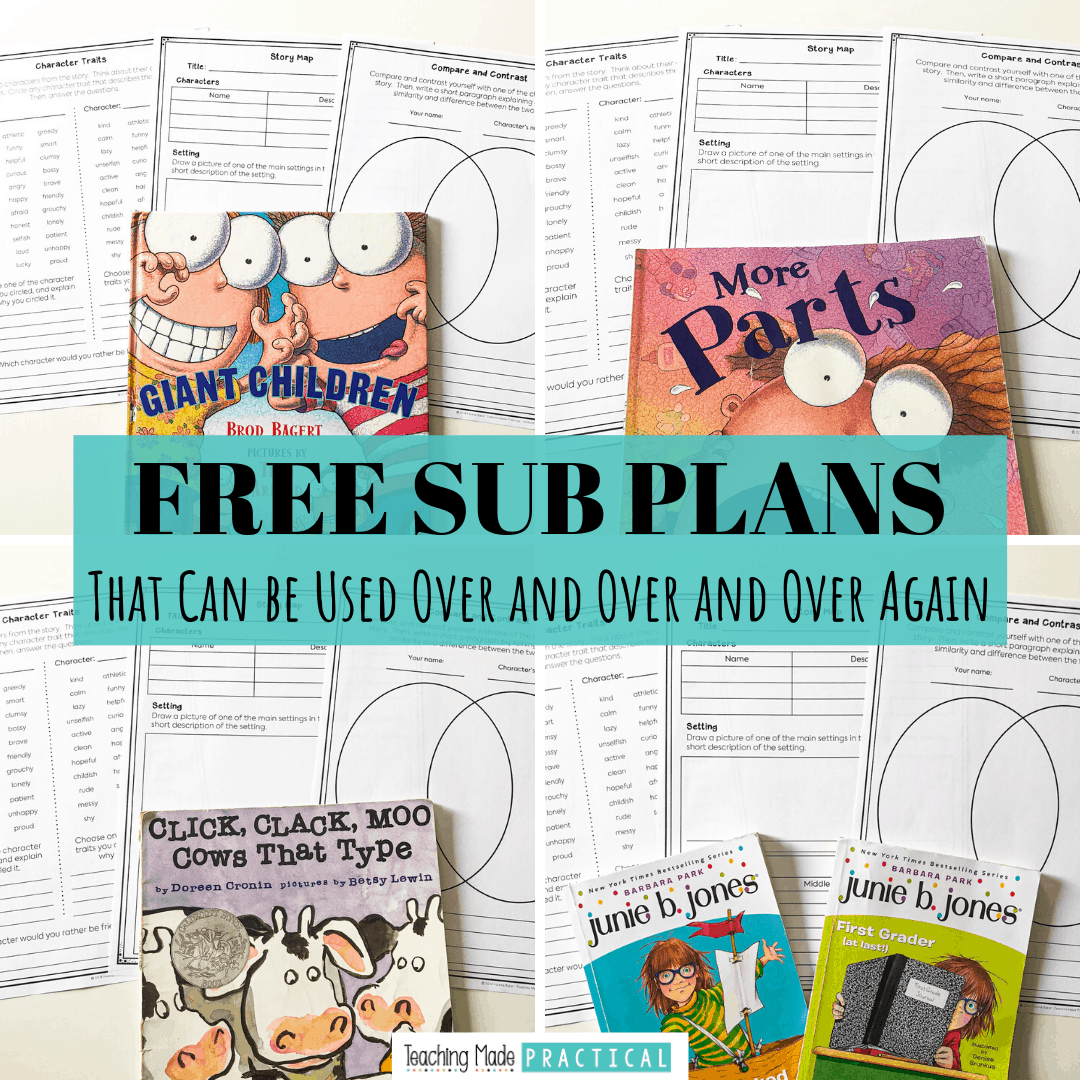
Make copies, find a fiction book, and you'll be ready for any emergency that comes your way!

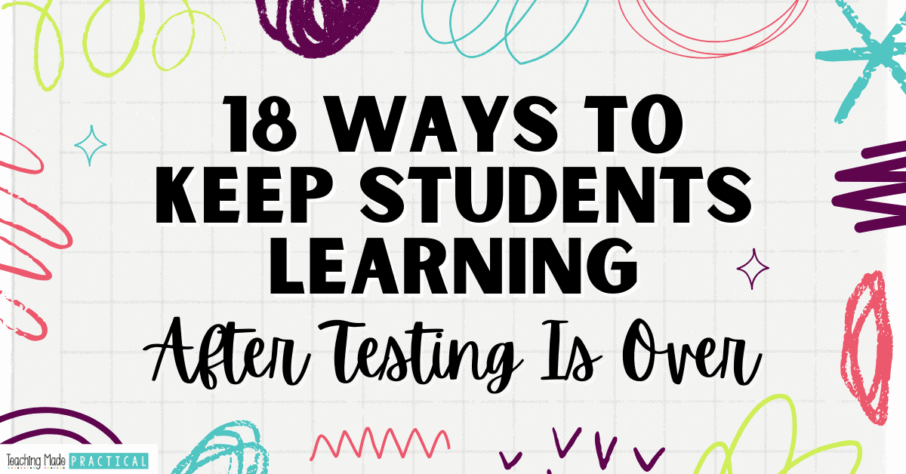
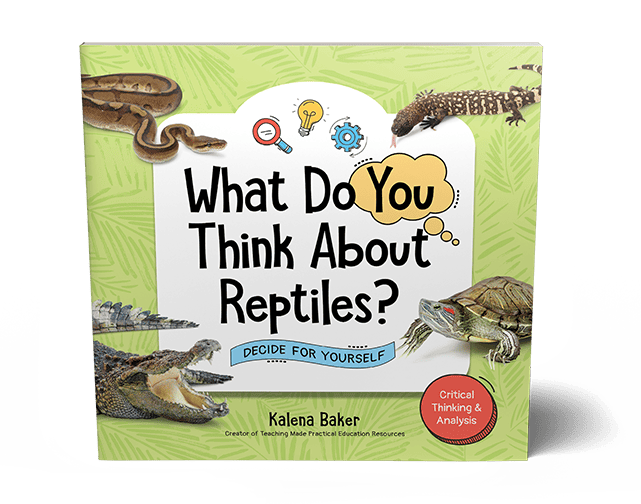



Comments 6
This is a very helpful way of relieving after testing pressure. I thank you for this helpful finding. Us, teachers usually forget that we need to cool of the pot. Ease the students down after pressures. I thank you very much.
Great list! Thank you! An add-on to Teach a Strategy Game: Invite parents or next year’s teacher to share a favorite card game (Cribbage, GinRummy, Spoons, Old Queen (vs Maid), Wild8s (vs Crazy)…etc).
I make a summer survival kit in a screw top tall Tupperware for each student with playing cards, dominoes, and dice from Dollar Tree & a small flip notebook. The students keep track of the rules and game variations in their book as they learn and play what the presenters have taught.
Author
These are great ideas! Thanks for sharing!
These ar fantastic ideas! Thank you so much for sharing.
These ideas are wonderful! i have already started some of them for my 4th graders. They LOVE being the teacher, so that idea is a hit! 🙂
I love it!